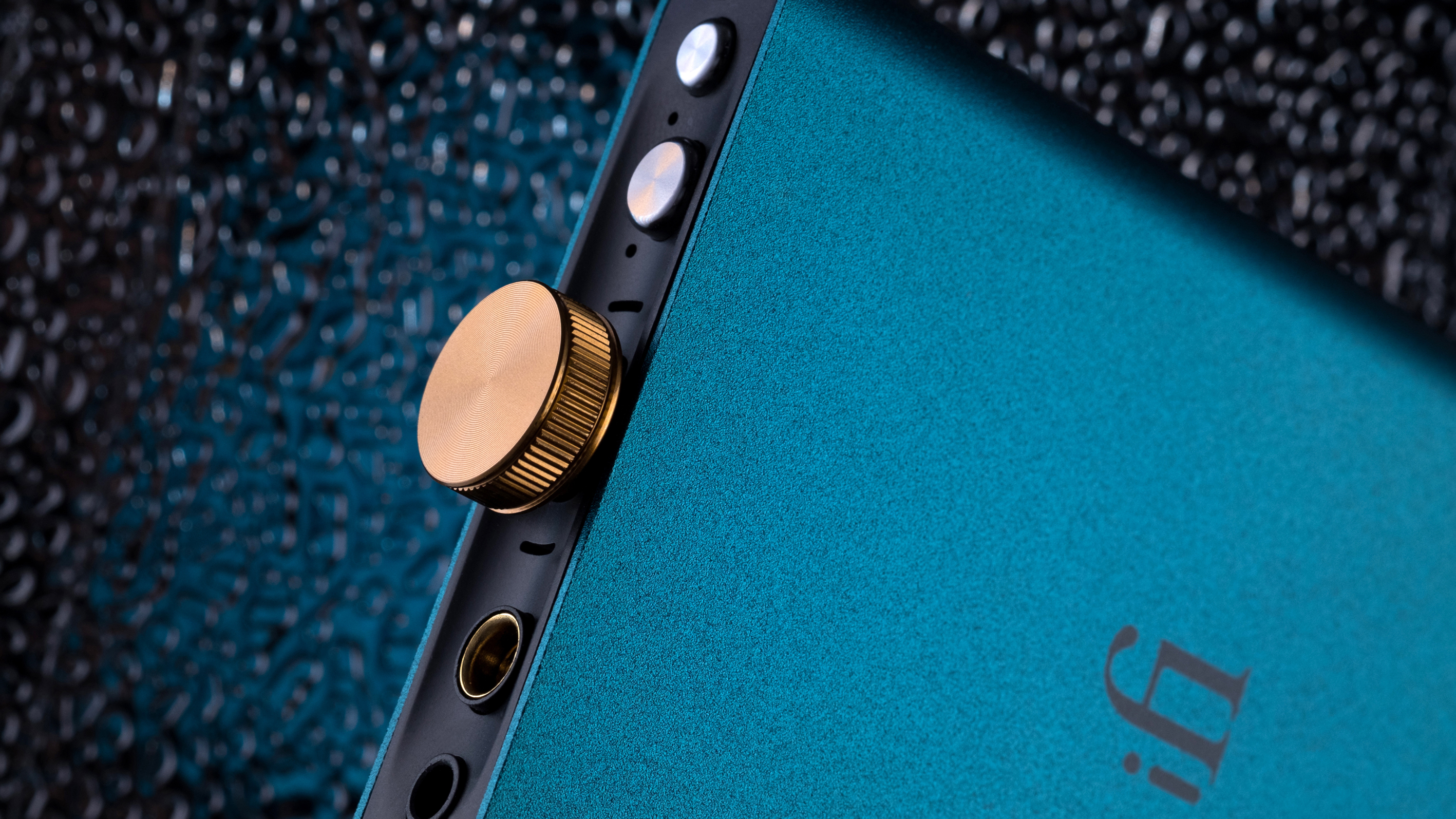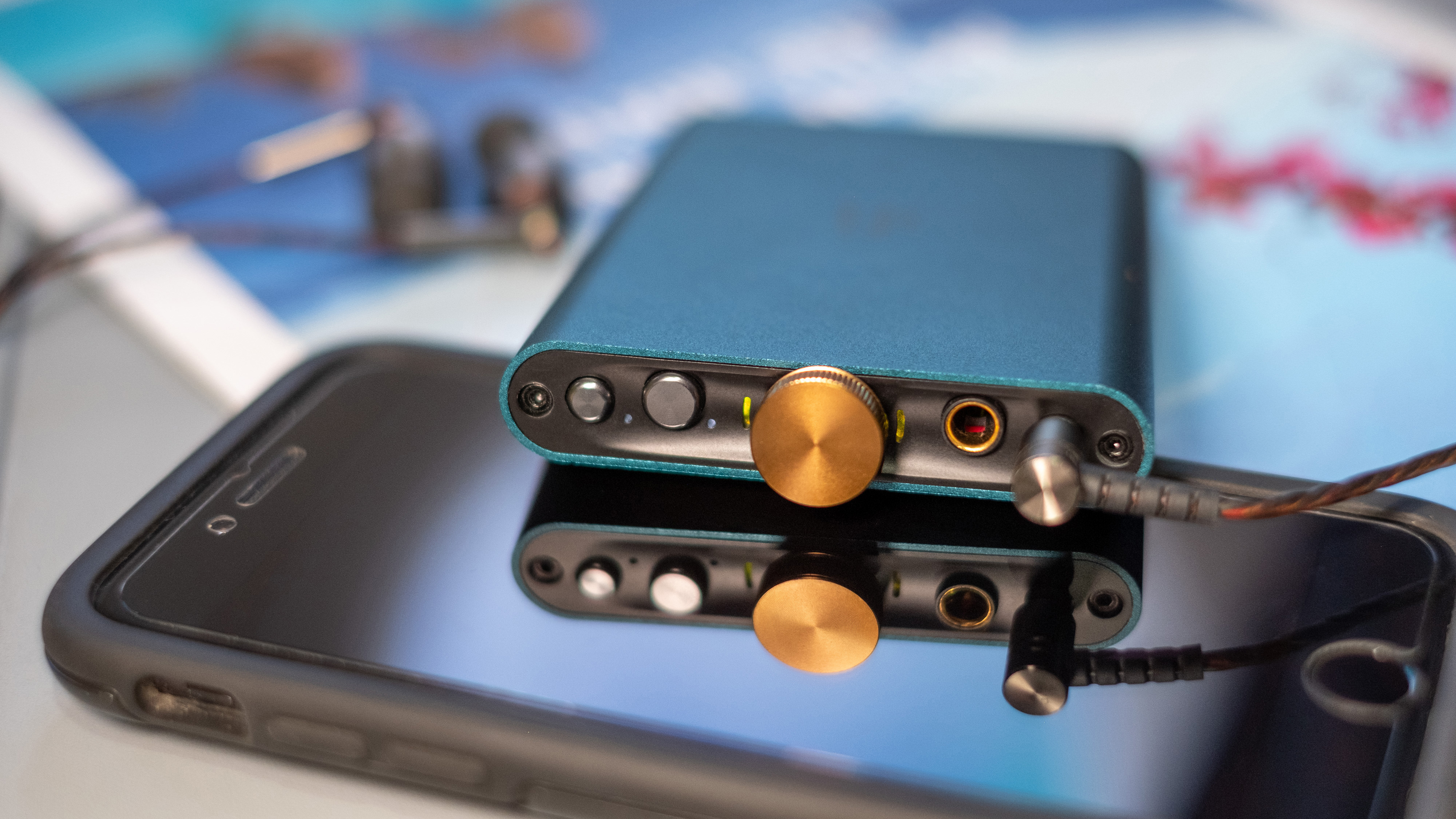iFi's hipflask-style headphone amp is out to intoxicate your ears

If you're a music fan and you've just bought the best headphones you can afford, you probably want to make sure you get the most out of them – and a portable DAC might be a good way to make your smartphone/headphone combo sound better than ever.
If that sounds like you, you might want to check out the new portable headphone amp from iFi; the iFi hip-dac looks just like a hip flask, but instead of coming with alcohol inside, the audio company claims it's perfectly designed to make your headphones sound better.
- The best portable DACs you can buy in 2020
- The best headphones to go with your portable amp
- Hi-Res Audio: everything you need to know about audiophile codecs
With a petrol blue aluminum finish and copper accents, the hip-dac should be small enough to slip into your pocket – though it looks so sleek, you might want to show it off anyway.
Costing £149 (that's about $190 / AU£$290), it's cheaper than our top portable DAC, the iFi xDSD, and just a little more expensive than the Audiolab M-DAC Nano.
Bit-perfect
Like other portable headphone amps, the hip-dac is made to replace the amp circuitry inside your smartphone, tablet, laptop, or computer, to improve the sound of your wired headphones.
Using a Burr-Brown DAC chip, the iFi hip-dac ensures digital audio formats stay "bit-perfect" right through to analogue conversion, which is unusual for headphone amps – and with support for PCM, DSD (both of which are supported at sampling rates up to 384kHz), MQA (the Hi-Res codec used by Tidal Masters), and other codecs, your music should sound pretty much flawless.
This DAC chip, alongside 'clock-locking' technology and iFi's own firmware, should eradicate any digital distortion, keeping the digital signal perfect until it's converted to analogue. iFi says that the firmware can be updated to add in new features, and that customers can even "install different versions of iFi firmware to experiment with different digital filters".
Sign up for breaking news, reviews, opinion, top tech deals, and more.

iFi claims that the hip-dac is capable of delivering over 700mW from the balanced output – while this depends on the impedance of the headphones you're using, it's an impressive number.
With a switchable gain, you can tailor the level of drive to whatever headphones you're using; for example, if you're using over-ear headphones, which typically require more drive, you can press the 'PowerMatch' button on the front of the DAC to increase the gain.
There's also a bass boost button that iFi says will "enhance low frequencies without muddying the midrange" – rather than using DSP (digital signal processing), it does this to the analogue signal.

There are two USB ports include – a USB-A port for audio data and a USB-C port for charging. What's unusual about this set up is the fact that the USB-A input features a 'male' connector instead of a 'female' port, which iFi claims will provide "greater mechanical integrity" than the standard USB ports found its competitors.
In terms of outputs, you have a 3.5mm plug for your headphones with a single ended cable, and a 4.4mm output that allow balanced headphones to take "full advantage of the hip-dac's differential amp design".
A portable headphone amp is no good unless it can last you all day – and the iFi hip-dac boasts a playback time of 8 to 12 hours, depending on volume and how power-hungry your headphones are.
That should be enough to keep you going though your early morning commutes – and while it won't keep you as warm as a flask full of whiskey, the iFi hip-dac should treat you ears to some toasty bit-perfect tunes.
- Read our Tidal review

Olivia was previously TechRadar's Senior Editor - Home Entertainment, covering everything from headphones to TVs. Based in London, she's a popular music graduate who worked in the music industry before finding her calling in journalism. She's previously been interviewed on BBC Radio 5 Live on the subject of multi-room audio, chaired panel discussions on diversity in music festival lineups, and her bylines include T3, Stereoboard, What to Watch, Top Ten Reviews, Creative Bloq, and Croco Magazine. Olivia now has a career in PR.